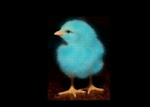Last week my stepmom sent me a link to a NY Times article on stem cell researchers who were fearing loss of their jobs, their entire life's work as researchers, because of the issues with funding of stem cell research in this country. I started, not once, not twice, but three times to write a post on the article but got so angry that I set it aside.
I started wondering whether many of you even know what stem cells are. So this for the rest of this week, I'm going to put up some posts with some basic information about stem cells, and stem cell research, closing on Friday with a discussion about the landmark announcement on Monday of this week of work on testing stem cell therapy for spinal cord injury patients and the use of mesenchymal stem cells in cardiac patients.
But first things first. What is a stem cell?
In order for a cell to be considered a stem cell, it has to have only two characteristics:
1. self-renewal or the capacity to undergo through cycles of undifferentiated cell division. (differentiation is just kind of like developing a particular function, so undifferentiated means the cell hasn't chosen what it's going to be when it grows up yet.)
2. potency or the ability to then be differentiated into any specialized type of cell.
Potency, which has nothing to do with Viagra in this case, can be either totipotent (capable of differentiation into any type of cell, including into a fully functioning organism, e.g. "you can be whatever you want when you grow up, honey"), pluripotent (descended from totipotent cells and can differentiate into most types of cells but not all, "no sweetie, you can't be a pilot because your eyesight is really bad") or multipotent (already so differentiated that they can only further differentiate along the same line, "your degree in the sciences qualifies you for admission to the following science-related graduate programs..."). Unipotent cells already have a clear job or function.
This is all summed up visually here:
Image credit: Mike Jones
Embryonic stem cells originate from the blastocyst.
A blastocyst is a clump of fertilized cells that has divided steadily for about five days after the sperm successfully hit and implanted in the egg or oocyte. Only a small subset of cells in the blastocyst yield pluripotent stem cells.
This highly magnified human blastocyst (the early embryo) is about the same size as a period at the end of a printed sentence. ← (That period there is about the size...) Embryonic stem cells are created from the inner cell mass from leftover embryos at this stage after egg and sperm are mixed in a dish in a fertility clinic. Excess embryos used for research would never be used for fertility purposes, but are routinely discarded as medical waste. Photo credit: Gary Smith, PhD, University of Michigan. (text © University of Michigan Stem Cell Center.)
Magnified image of a human blastocyst. Green area is the inner cell mass, the cluster of cells along the inner wall of the blastocyst that provide the embryonic stem cells. The red cells are trophectoderm. Photo credit: Gary Smith, PhD University of Michigan. (text © University of Michigan Stem Cell Center.)
Pregnancy is usually defined in weeks, not days, from the last menstrual cycle.
A blastocyst is not a fetus.
© Bright Nepenthe, 2010


























No comments:
Post a Comment